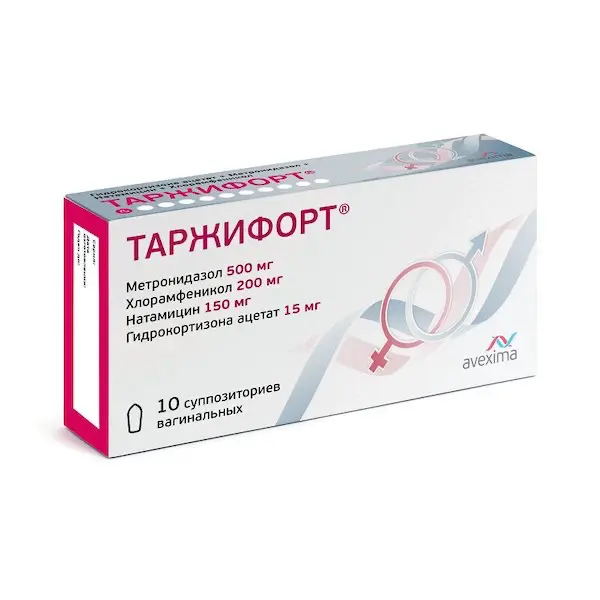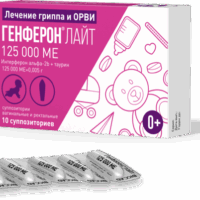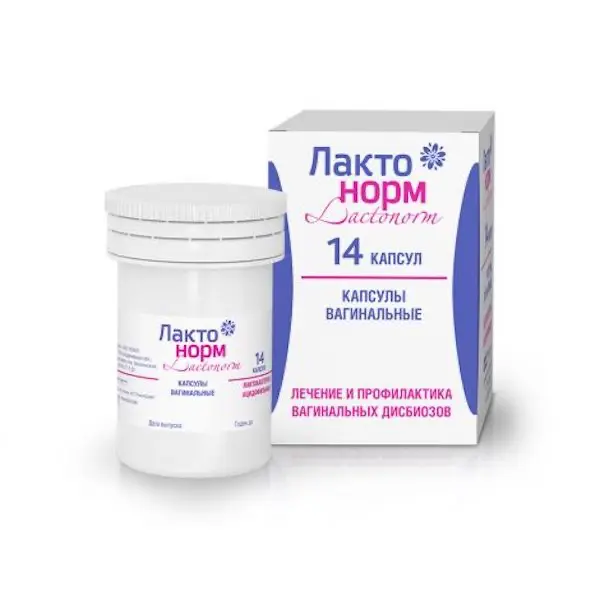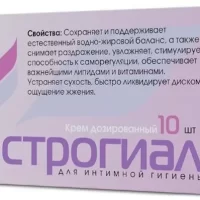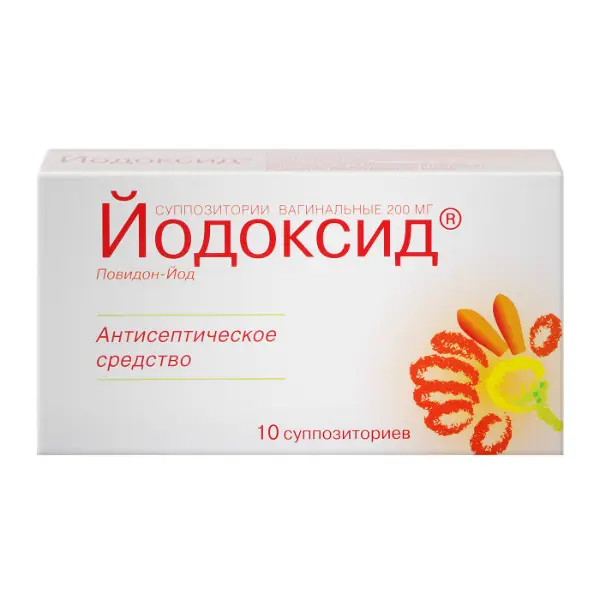Description
Targifort Pharmacodynamics
A combination drug for intravaginal use, the effectiveness of which is due to the combined action of its constituent components.
Metronidazole is an antimicrobial and antiprotozoal drug, a derivative of 5-nitroimidazole. The mechanism of action is the biochemical reduction of the 5-nitrogroup of metronidazole by intracellular transport proteins of anaerobic microorganisms and protozoa. The reduced 5-nitrogroup of metronidazole interacts with the DNA of the microbial cell, inhibiting the synthesis of their nucleic acids, which leads to the death of the bacteria. Active against: Protozoa/ facultative anaerobes: Trichomonas vaginalis, Gardnerella vaginalis, Giardia intestinalis, Entamoeba histolytica; Anaerobic Gram-negative bacteria: Bacteroides spp. (including Bacteroides fragilis, Bacteroides distasonis, Bacteroides ovatus, Bacteroides thetaiotaomicron, Bacteroides vulgatus), Fusobacterium spp, Veillonella spp., Prevotella spp. and some gram-positive microorganisms (Eubacterium spp., Peptococcus spp., Peptostreptococcus spp., Clostridium spp.)
Chloramphenicol is a broad spectrum antibiotic. It has a bacteriostatic effect. Mechanism of action is associated with inhibition of microbial protein synthesis, due to binding of 50 S ribosome subunit and stopping the formation of peptide chain. Effective against strains of bacteria resistant to penicillin, tetracyclines, sulfonamides. Active against many Gram-positive and Gram-negative bacteria, causative agents of septic infections, typhoid, dysentery, meningococcal infection: Escherichia coli, Shigella dysenteria, Shigella flexneri spp, Salmonella spp. (including Salmonella typhi, Salmonella paratyphi), Staphylococcus spp., Streptococcus spp. (including Streptococcus pneumoniae), Neisseria meningitidis, Neisseria gonorrhoeae, several strains of Proteus spp, Burkholderia pseudomallei; Rickettsia spp., Treponema spp., Leptospira spp., Chlamydia spp. (including Chlamydia trachomatis), Coxiella burnetii, Ehrlichia canis, Bacteroides fragilis, Klebsiella pneumoniae, Haemophilus influenzae. It has no effect on acid-fast bacteria (including Mycobacterium tuberculosis), Pseudomonas aeruginosa spp., clostridia, methicillin-resistant strains of staphylococci, Acinetobacter, Enterobacter, Seirratia marcescens, indole-positive strains of Proteus spp. Resistance of microorganisms develops slowly.
Natamycin is a polyenic antibiotic from macrolide group that has a broad spectrum of action. It has a fungicidal effect. Natamycin binds sterols of the cell membranes of microorganisms, disrupting their integrity and function, which leads to a change in cell permeability and cell death. It is active against most pathogenic yeast-like fungi (especially genus Candida), dermatophytes (Trichophyton, Microsporum, Epidermophyton), yeasts (Torulopsis, Rhodotorula), other pathogenic fungi (Aspergillus, Penicillium, Fusarium, Cephalosporium). Resistance to natamycin in clinical practice does not occur.
Hydrocortisone acetate is a glucocorticosteroid. It has anti-inflammatory, anti-exudative and anti-allergic effects.
Indications
– Vulvovaginitis: bacterial, candidiasis, trichomoniasis and / or in association with mixed flora, sensitive to the components of the drug;
– nonspecific vaginitis;
– prophylaxis of urogenital infections before gynecological operations, diagnostic procedures and installation of intrauterine contraceptives.
Contraindications
– Hypersensitivity to the components of the drug;
– Severe liver or kidney function abnormalities;
– pregnancy;
– Breast-feeding period;
TARGIFORT® is not recommended for use in children under 18 years old in absence of the data on efficacy and safety.
Caution:
Caution is used with severe acute or chronic diseases of central and peripheral nervous system (including permanent or progressive neuropathies); hematopoiesis disorders (leukopenia in anamnesis).
Administration during pregnancy and breast-feeding:
The drug is contraindicated in pregnancy and during breast-feeding.
Dosage and administration method
- Intravaginally, 1 suppository before going to bed for 10 days.
- The suppository (pre-release from the envelope) should be inserted deep into the vagina, in a supine position, after hygienic treatment of the external genitalia.
- Repeated courses of treatment are possible after consultation with the doctor.
- If after treatment, no improvement or worsening of symptoms or appearance of new symptoms occurs, consult a doctor. Use the drug according to the indications, the method of administration and in such doses as stated in the instructions for medical use.

